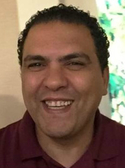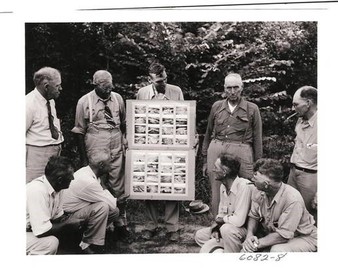July 2018

In recent years the MPCA has
completed many E. coli TMDLs in the tributaries to the Minnesota River,
covering much of the basin. Recently, the MPCA through a contract with Tetra
Tech drafted the Minnesota River E. coli TMDL and Implementation Strategies
Report addressing five main stem listings covering various
segments of the river from Big Stone Lake at the South Dakota border to Carver
Creek in the western metro area.
The report shows that the primary sources
of E. coli loading appear to be livestock manure and human waste via
non-compliant septic systems. Much of this loading is from watersheds with
completed or in-progress TMDLs, with the rest from areas directly draining to
the river, which is the primary focus of this report. Overall, the degree of
impairment in these main stem reaches is low to moderate. Strategies to protect
and restore water quality are outlined in the report, many of which are
practices called for in other ongoing studies to address other Minnesota River
impairments like sediment and phosphorus.
The MPCA is seeking any feedback on this
report from interested stakeholders during an informal comment period for the
next six weeks. Please send comments or questions to MPCA project manager Chris Zadak by Sept. 6. MPCA will consider all comments received during this
informal comment period prior to issuing a revised final draft for formal
comment during an official public notice comment period later this year.
Back to top
|
 Emma Volz is the new coordinator at the Chippewa River Watershed Project, succeeding Kylene Olson who has retired. She lives in Marshall with her family, husband Mark and two daughters. Previously she worked for Lincoln County, Yellow Medicine River Watershed District, and NRCS in GIS and wetlands specialist areas. She has an MS from SDSU in bio-geography with an emphasis on wetlands, and a BS from Minnesota State-Mankato majoring in ecology, environmental science, and geography.
While continuing the watershed project's ongoing monitoring and outreach, she will apply for a 319 grant to hire a water quality technician to replace Jennifer Hoffman, who has taken another job. Already Emma has been busy with scheduled events, such as a cover crop workshop July 10 at a farm near Benson. Next up are workshops on cover crops partnering with Land Stewardship Project (dates in News Brief article below). Emma's contact info: emmavolz@chippewariver.org, 320-321-1717.
Back to top
|
 The Dept. of Agriculture announced that Dr. Aicam Laacouri will be joining the Clean Water Technical Unit on Aug.1. Aicam is a research scientist with experience working across Minnesota and North and South Dakota. He has a technical background with experience in research as well as precision agriculture.
One of his primary roles with be to coordinate the Clean Water Research Program. Funded by the Clean Water Fund, it supports research to identify and evaluate the costs and benefits of agricultural processes affecting water quality. The program recently completed the second edition of the Agricultural Best Management Practices Handbook. It has expanded practices, their effectiveness, cost considerations and the required management and maintenance. The research program has supported 35 research projects and the MDA is looking forward to new proposals later this year. Additional information is available at: www.mda.state.mn.us/cleanwaterfund/research.
Back to top
|
An Administrative Law Judge has extended the amount of time the
public has to submit written input on the Minnesota Department of Agriculture’s
(MDA) proposed Groundwater Protection Rule. Judge Jessica Palmer-Denig issued
the order to leave the comment period open until 4:30 p.m. on Aug. 15, or
approximately two weeks longer than originally scheduled.
Written comments on the Groundwater Protection Rule can be made on
the Office of Administrative Hearings website at www.mda.state.mn.us/gwprhearingnotice.
Public input is important to the rule making process and in addition
to submitting written comments online, the public is also invited to testify at
hearings on the proposed rule July 25, starting at 10 a.m.
at River's Edge Convention Center in St. Cloud, and on Thursday,
July 26, starting at 9 a.m. at the American Legion in Park Rapids,
Minnesota. - MDA news release, 7/20/18
Back to top
 The DNR's Watershed Health Assessment Framework (WHAF) is rolling out a new mapping application. Use the 'interactive map' link on the WHAF home page. This will open the current map but it will also give you the option of switching to the Next Generation WHAF Map. When you open the new map, click anywhere in Minnesota to set your location. Here are some tips to check out the new navigation:
-
Set Scale lets you zoom and mask to different watershed boundaries. Use the 'select all' button to delineate nested watershed boundaries.
-
Basemaps are found across the bottom and the new MNDNR map gives quick access to finding state managed lands.
- The Ecological Health Scores are still there for the 'five components', but now you can use the ‘I’ to 'identify' the score on the map.
-
Charts and Reports will access updated Land Cover and Crop Use Charts, and also provide a quick link to Watershed Context Report and Health Report Card.
More tools and data layers are still in development, so check back often to see ongoing additions and improvements. Not ready to make the switch? Need a function not available in the new map? Close the popup window and continue to use the current WHAF map. You will be able to choose between the old and the new for a few months to make the transition as easy as possible for all of us. As always, your feedback is welcome so send us an email with your questions, reactions and suggestions at WHAF.DNR@state.mn.us.
Back to top
|
Registration open for Watershed Specialist Training fall session
The Minnesota
Watershed Specialist Training fall session will be Sept. 4-Dec. 16. It is designed to help staff from SWCDs, watershed districts, tribes, counties, and cities strengthen their ability to protect water
resources. It is entirely online so you save travel costs and interact with
professionals from around the state.
Gain practical skills to apply immediately and to build your career. Learn
about:
- Assessing
the community and stakeholders to more effectively engage them in
problem-solving,
- Identifying
social and physical data needs so you can design a monitoring or
evaluation program,
- Writing
a communication strategy and effectively getting your message across to
diverse audiences,
- Justifying
implementation activities that will best address the local water resource
issues, and
- Pulling
it all together into a work plan that could be used for a grant proposal.
Apply now to ensure your place; you can
pay later.
Learn more about Watershed Specialist Training
2018 Regional Wetland LGU and TEP training Sept. 17, Oct. 9
Trainings
will take a hands-on regional approach on applying technical, administrative,
and regulatory training for wetland LGUs and TEP in the area. Watch for more
details at www.bwsr.state.mn.us/training. Registration
opens Aug. 1. Call the BWSR Duluth Office with questions -
218-723-4752. Thief River Falls, Sept. 17; Mankato, Oct. 9
'Conservation for a profitable farm' workshops
offered
A series of workshops about "conservation for a profitable
farm business" in the Shakopee Creek Watershed will provide farmers and
landowners an opportunity to learn from other farmers and experts ways to
support profitable farming while building healthy soils and maintaining clean
water. Remaining workshops include:
To register contact SWCD offices in Chippewa, Kandiyohi, or Swift
counties, or Land Stewardship Project office in Montevideo, 320-269-2105.
Regenerative Farming and Ranching workshop July 31-Aug. 2
Soil health experts Ray Archuleta, Gabe Brown, Allen Williams, and David Brandt will be the featured presenters at the Regenerative Farming and Ranching workshop July 31-Aug. 2 at the Redwood Falls American Legion, 8:30 a.m. to 5 p.m. They will teach how to increase profitability, decrease drought and flooding impact, regenerate soil health, use cover crops, and integrate livestock into cropping systems. Space is limited and tuition is charged. Register at learn@soilhealthacademy.org, 256-996-3142.
MECA sponsors tour of St. Anthony Falls lab Sept. 12
The Minnesota Erosion Control Association (MECA) is sponsoring a tour through the historic St. Anthony Falls Laboratory Sept. 12. Located on Hennepin Island in the heart of Minneapolis, the St. Anthony Falls Laboratory is an interdisciplinary fluid mechanics research and educational facility of the College of Science and Engineering at the University of Minnesota. Attendees could include city, county, watershed, SWCD staff; building contractors, excavators, demolition contractors, inspectors, consultants - whoever deals with construction erosion, sediment control and runoff reduction concerns. Register by Sept. 5 with MECA at 320-685-5444, meca@mnerosion.org. Fee $30 for members; $35 non-members. Dress appropriately for dusty, wet, or muddy conditions. Event qualifies for professional development hours.
Back to top

This year
marks the 80th anniversary of the formation of the first Soil and Water
Conservation District in Minnesota. The first district was the
Burns-Homer-Pleasant SWCD located in Winona County. To highlight this
milestone, the Conservation Partnership, MASWCD, NRCS, BWSR and Winona County
SWCD, are planning an outreach event on Tuesday, Aug. 14 to advance the SWCD
and NRCS mission of voluntary conservation and technical assistance. The
event will take place at Farmers Community Park, 23274 Arches Rd, Winona, MN
55987 (look for additional event information from MASWCD in the near future).
Back to top
|
Abel Green has joined the MPCA's Watershed Information and Assistance
Unit. He will be working with the Clean Water Act Section 319 Small Watersheds Focus grant program where he will assist local partners in developing Focus grant workplans for small watersheds around the state. Abel
received his BS degree in field biology from the University of
River Falls. He has experience in water quality field work and did a two-year internship working with aquatic invasive species. Abel last worked
as a sales manager at Cabela’s. He served four years of active duty in
the U.S. Navy as a cryptologic technician.
Back to top
Alycia Overbo and Sara Heger, U of M Water Resources Center, Summer 2018 newsletter:
Salt is used every day in many applications. People add salt to food, apply salt to pavement and roads after snowfall, and use salt in their water softeners. While salt is inexpensive to purchase, it can have a high environmental cost, as elevated chloride levels are toxic to many plant and aquatic species.
2018 Clean Water Accountability Report posted on MPCA website
The 2018 Clean Water Accountability
Report is now posted on the MPCA’s external website at: www.pca.state.mn.us/healthier-watersheds. The
Clean Water Legacy Act requires that the Agency report actions taken in
Minnesota’s watersheds to meet water quality goals and outcomes. The
MPCA’s first report in 2016 covered eight WRAPS-approved watersheds. This
year’s report provides more data online and covers all 80 watersheds statewide,
including status of WRAPS/TMDLs, wastewater loading, best management practices,
and spending for implementation projects. The
data is easily searchable in a number of ways through a flexible online format,
and using an engaging new web page – Healthier watersheds: Tracking the
actions taken. Questions can be directed to David Miller or Jeff Risberg.
Two EPA Gulf of Mexico Program Requests for Proposals currently open
The U.S. Environmental Protection Agency’s Gulf of Mexico Program is soliciting proposals from eligible entities that address water quality improvement; coastal habitat and ecosystems enhancement, restoration and/or protection; environmental education and outreach; and community resilience in the Gulf of Mexico region and its watersheds. Proposals must fully describe the scope of the project, budget and environmental results. Criteria, as described in Section V, will be used to evaluate eligible proposals.
The total amount anticipated to be awarded under this announcement is approximately $5 million. EPA anticipates awarding approximately 12 cooperative agreements from this announcement, subject to availability of funds, the quality of proposals received, and other applicable considerations.
The deadline is July 31 for Gulf of Mexico Program Cooperative Agreements 2018 Request
for Proposals: https://www.epa.gov/gulfofmexico/gulf-mexico-program-request-proposals-2018.
Gulf of Mexico Program Farmer to Farmer Cooperative
Agreements 2018 Request for Proposal (closes Sept. 12): https://www.epa.gov/sites/production/files/2018-07/documents/epa_gmp_farmer_final.pdf
.
Back to top
|